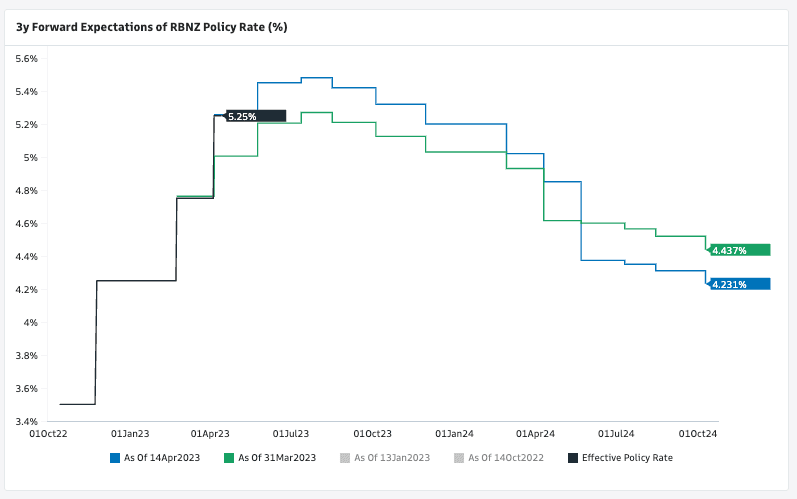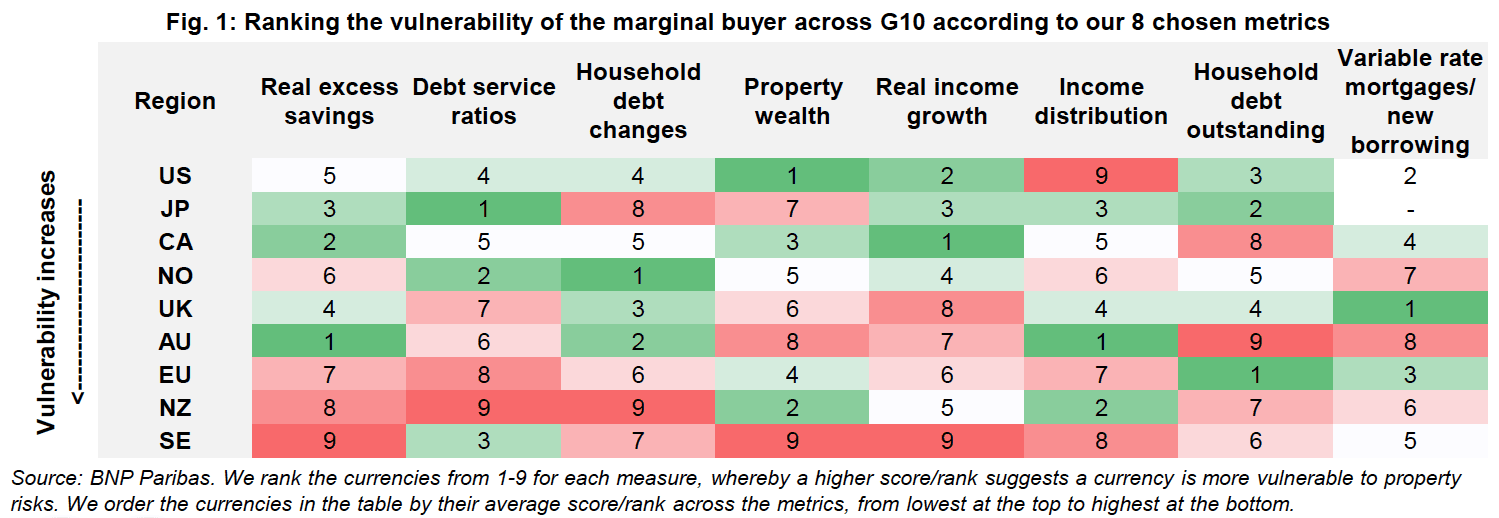New Zealand Dollar: Housing Downturn Keeps us 'Short' says BNP Paribas
- Written by: Gary Howes
-

Image © Adobe Stock
New Zealand is "in a tough spot" as rising interest rates expose vulnerabilities in household finances that could leave the New Zealand Dollar weaker, according to new research.
BNP Paribas - the global investment bank and lender - finds rising central bank interest rates will impact some economies more than others, with New Zealand and Sweden looking particularly exposed.
"Sweden and New Zealand look most vulnerable to a property-led economic downturn, according to our analysis," says Parisha Saimbi, FX Strategist at BNP Paribas, and this will have implications for the NZ Dollar's outlook.
The Reserve Bank of New Zealand (RBNZ) has delivered eleven interest rate hikes since October 2021, taking the Official Cash Rate to 5.25%.
This puts pressure on local lenders to raise rates on their own loans and mortgages which puts the squeeze on businesses and households with the intention of bringing inflation in the economy under control.
However, there is a risk interest rates rise to levels that prompt a severe contraction in house prices and economic recession.
Indeed, money market pricing shows investors see the prospect of at least one further interest rate hike from the RBNZ in 2023, which will heap further pressure on those households needing to remortgage.
Above: The market's expectations for the trajectory of NZ interest rates. Image courtesy of Goldman Sachs.
"With interest rates climbing towards pre-GFC levels, house prices in several countries are readjusting lower to factor in the higher cost of capital, risking some recent home purchasers slipping into negative equity," says Saimbi.
BNP Paribas says the marginal buyer of real estate is often highly leveraged and therefore susceptible to changes in the value of their asset or the cost of their mortgage
The bank's new research explores the vulnerability of the marginal buyer in each G10 region according to a number of factors, laid out in the below chart:
Click to enlarge. Image courtesy of BNP Paribas.
The research finds New Zealand's household sector is particularly exposed because of the following reasons:
(1) low excess savings having accumulated over the pandemic
(2) a likely sharp increase in debt service ratios, with the rise in interest rates, to levels well above pre-pandemic average levels
(3) high levels of overall household leverage, due to a significant increase in household debt over the past 3 years far outpacing growth in the real economy
(4) a large proportion of new borrowing over the past year being variable-rate, suggesting a larger pool of new borrowers exposed to the sharp increase in interest rates
What does this mean for the outlook of the New Zealand Dollar?
"We see risks that the RBNZ may not be able to deliver as many hikes as it projects, or may need to cut rates earlier and/or more aggressively," says Saimbi.
Indeed, while markets also see one more rate hike from the RBNZ they are also factoring the OCR to be below current levels by year-end.
For the currency, the pace of future rate cuts is now arguably more important than the potential rate hikes yet to come.
"In turn, we also favour trading NZD from the short-side this year, and are already short NZD versus JPY and AUD in our model portfolio," she adds.
Analysts at JP Morgan also see downside risks to the New Zealand Dollar stemming from a housing market contraction.
The Wall Street bank's research finds house prices matter for currency markets and developments in New Zealand prompt it to hold a "bearish bias" on the New Zealand Dollar.
"House prices have fallen in the Antipodeans but the decline has been deeper for New Zealand, where they are down 16% from the peak," says Meera Chandan, an economist and currency analyst at JP Morgan in London.
JP Morgan's New Zealand strategists meanwhile note the deeper decline in New Zealand's housing sector "is symptomatic of weaker credit demand/activity, and household consumption is more sensitive to that in NZ than Australia."
The bank's research notes the saving rate in New Zealand runs structurally lower than in Australia and as a result, Kiwi households are more reliant on credit growth.
Data shows that in the year to the third quarter, the savings rate averaged 10% in Australia, compared to 3% in New Zealand.
"So the implications for NZD are relatively larger through this channel," says Chandan.







